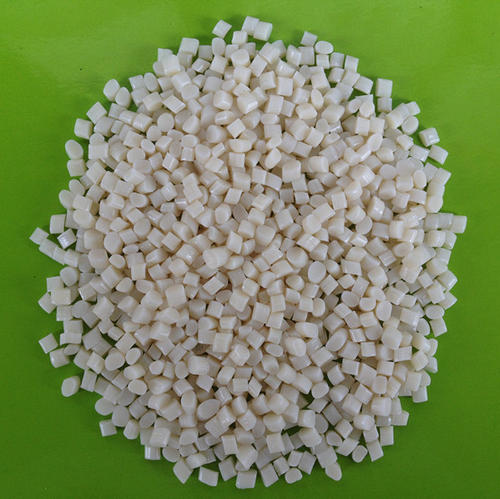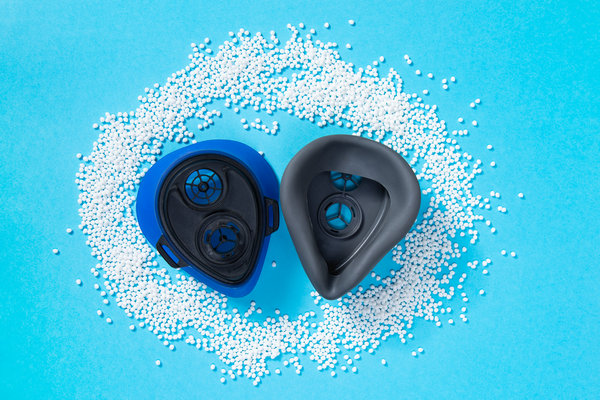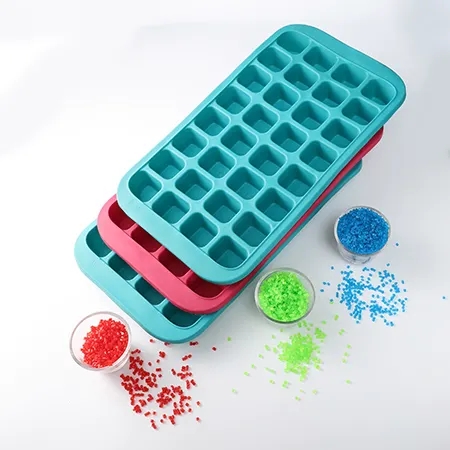Having worked in the plastics extrusion industry for over a decade, I’ve spent countless hours troubleshooting issues that can make or break a production run. One problem that crops up frequently, especially with TPE (Thermoplastic Elastomer) extrusion, is a rough surface finish—think matte, gritty, or uneven textures that ruin the look and feel of your product. If you’re staring at a batch of extruded TPE parts with a surface that’s more sandpaper than silk, I feel your frustration. This issue can derail everything from aesthetics to functionality, especially for applications like seals, grips, or medical tubing. Drawing from my experience on the factory floor and in process optimization, I’ll guide you through why this happens and, more importantly, how to fix it with practical, tested solutions.

Why Does TPE Extrusion Result in a Rough Surface?
When I first started working with TPE extrusion, I was surprised by how often a smooth, glossy finish turned into a rough, matte mess. A rough surface, sometimes called a sharkskin effect or melt fracture, isn’t just a cosmetic issue—it can affect performance, increase scrap rates, and drive up costs. Over the years, I’ve learned that this problem stems from a mix of material, equipment, and processing factors. Before diving into solutions, let’s unpack the main causes I’ve encountered in my work with manufacturers of TPE profiles, tubing, and films.
1. Material Properties and Formulation
TPEs are a diverse family of materials, blending the elasticity of rubber with the processability of plastics. However, their complex formulations—often including fillers, plasticizers, or stabilizers—can lead to surface issues if not optimized. For instance, high filler content or incompatible additives can create a grainy texture. I’ve seen this in TPE compounds with excessive calcium carbonate, where the filler particles protruded, causing roughness.
In one project, a client extruding TPE seals for automotive doors struggled with a gritty surface. After testing, we found the TPE had a high wax content, which was migrating to the surface during cooling. Switching to a low-wax formulation smoothed things out.
2. Improper Melt Temperature
Temperature control is critical in TPE extrusion, and I’ve found that excessive or insufficient melt temperature is a common culprit for rough surfaces. Too high, and the TPE can degrade, creating surface irregularities. Too low, and the material doesn’t flow smoothly, leading to melt fracture—a rippled, rough texture caused by shear stress at the die exit.
I once helped a tubing manufacturer who was running their TPE at 230°C, well above the recommended range. The result was a matte, uneven surface. Dialing back to 190°C, per the material supplier’s guidelines, restored a glossy finish.
3. Die Design and Surface Condition
The extrusion die plays a huge role in surface quality. A poorly designed or worn die can cause turbulence or sticking, resulting in a rough finish. Narrow die gaps, sharp edges, or surface imperfections (like scratches or buildup) can exacerbate this. In my experience, dies that aren’t polished or coated properly are a frequent source of trouble.
I recall a factory producing TPE weatherstripping where a scratched die land was causing a streaky, rough surface. Polishing the die and applying a PTFE coating fixed the issue overnight.
4. Cooling Rate and Method
How you cool the extruded TPE can make or break the surface finish. Rapid or uneven cooling can cause internal stresses, leading to a matte or wavy surface. Water baths, air cooling, or calibration systems that aren’t optimized for TPE can worsen this. I’ve seen cases where a too-cold water bath shocked the TPE, creating a frosted look.
In one instance, a client making TPE profiles for furniture noticed roughness when using a cold water bath. Switching to a temperature-controlled bath at 40°C improved the surface dramatically.

5. Moisture or Contamination
Moisture in TPE pellets or contamination from dust, oils, or incompatible resins can lead to surface defects like splay or roughness. This is especially common in humid environments or when materials aren’t stored properly. I’ve seen factories solve this simply by improving their material handling practices.
6. Extrusion Speed and Shear Rate
Running the extruder too fast can increase shear stress at the die, causing melt fracture and a rough surface. This is particularly true for high-viscosity TPEs. I’ve worked with manufacturers who pushed their lines to maximize output, only to end up with scrap due to poor surface quality.
Solutions to Achieve a Smooth TPE Surface
Now that we’ve covered the causes, let’s get to the fixes. Based on my years of troubleshooting, here’s a step-by-step approach to eliminating rough surface finish in TPE extrusion. These solutions are practical, tested, and designed to keep your production line running smoothly.
1. Optimize TPE Formulation
Start by reviewing your TPE formulation with your material supplier. Request a grade designed for extrusion with low filler content and minimal migratory additives (like waxes or plasticizers). If you’re seeing roughness due to fillers, ask for a low-filler or high-clarity TPE. In one project, I helped a client switch to a TPE with reduced calcium carbonate, which eliminated the grainy texture on their extruded gaskets.
If reformulation isn’t feasible, test different grades. Suppliers often have extrusion-specific TPEs with enhanced flow properties to reduce melt fracture. Always request technical data sheets and run trials before committing.
2. Fine-Tune Melt Temperature
Temperature control is make-or-break for TPE extrusion. Check the recommended melt temperature from your TPE supplier—typically 180-210°C for most grades. Avoid exceeding this range to prevent degradation, and ensure all barrel zones are set correctly to maintain a consistent melt.
I once worked with a medical tubing manufacturer who was getting a sharkskin effect due to a hot die tip (220°C). Lowering it to 195°C and ensuring uniform barrel temperatures smoothed the surface without slowing production. Use a melt temperature probe to verify actual conditions, as setpoint temperatures can be misleading.
3. Improve Die Design and Maintenance
A well-designed die is critical for a smooth finish. Ensure the die has a polished land (the final section where the TPE exits) and a gradual taper to minimize shear. If you’re seeing roughness, inspect the die for scratches, buildup, or wear. I recommend polishing dies with a 600-grit or finer abrasive and applying a PTFE or nickel-PTFE coating for reduced friction.
In a project for TPE film extrusion, a client resolved a streaky surface by replacing a worn die with a chrome-plated one. Regular die cleaning—every 500-1000 hours of operation—can also prevent buildup-related roughness.

4. Optimize Cooling Systems
Cooling is where many TPE extrusion lines falter. Use a temperature-controlled water bath (30-50°C, depending on the TPE grade) to avoid shocking the material. For profiles or complex shapes, consider vacuum calibration to maintain shape and surface quality. Ensure cooling is uniform to prevent stress-induced roughness.
I helped a manufacturer of TPE seals switch from a cold water bath (10°C) to a warm one (40°C), which eliminated a matte finish and improved dimensional stability. If air cooling is used, ensure fans are evenly distributed to avoid hot spots.
5. Eliminate Moisture and Contamination
Moisture is a hidden enemy in TPE extrusion. Dry TPE pellets for 2-4 hours at 70-80°C using a desiccant dryer to achieve a moisture content below 0.02%. In humid environments, this is non-negotiable. I’ve seen factories cut scrap rates by 20% just by upgrading their drying systems.
Also, store pellets in sealed containers to prevent contamination from dust or oils. I once traced a rough surface issue to a batch of TPE contaminated with residual PP from a shared hopper. Cleaning and segregating material storage fixed it.
6. Adjust Extrusion Speed and Screw Design
High extrusion speeds can cause melt fracture, especially with viscous TPEs. Reduce screw speed gradually (e.g., 10-20% lower) and monitor surface quality. If the problem persists, check your screw design. A low-shear screw with a gradual compression ratio (e.g., 2.5:1) works best for TPE.
In a project for TPE tubing, slowing the line from 20 m/min to 15 m/min eliminated sharkskin without hurting output. If high speeds are necessary, consider a die with a longer land length to reduce shear stress.
7. Post-Extrusion Surface Treatment
If roughness persists, post-processing can help. For minor defects, flame treatment or corona treatment can smooth the surface by altering its molecular structure. For cosmetic applications, polishing rollers or extrusion line calibrators can enhance gloss. I’ve used flame treatment on TPE profiles for consumer goods, achieving a near-mirror finish without compromising material properties.
Comparison of Solutions for Rough TPE Surfaces
Here’s a table summarizing the key solutions, their applications, and trade-offs, based on my field experience:
|
Solution |
Best For |
Pros |
Cons |
|---|---|---|---|
|
Optimize TPE Formulation |
Filler or additive issues |
Long-term solution, high quality |
Requires supplier collaboration |
|
Adjust Melt Temperature |
Melt fracture, degradation |
Quick fix, no equipment cost |
Needs precise control |
|
Improve Die Design |
Shear-related roughness |
Durable solution, improves flow |
High initial cost |
|
Optimize Cooling |
Stress-induced roughness |
Enhances dimensional stability |
May require equipment upgrades |
|
Eliminate Moisture |
Splay or contamination |
Prevents multiple defects |
Requires drying investment |
This table can help you prioritize based on your specific issue and resources.
Real-World Examples from My Career
Let me share a couple of stories to show how these solutions play out. A few years ago, I consulted for a factory extruding TPE tubing for medical applications. They were getting a sharkskin finish that failed quality checks. After inspecting their setup, I found the die tip was too hot (225°C) and the screw speed was pushing the TPE beyond its shear limit. We lowered the die temperature to 190°C, reduced the screw speed by 15%, and added a vacuum calibrator. The result was a glossy, defect-free tube that passed FDA standards.
Another time, I worked with a manufacturer of TPE window seals who dealt with a gritty surface due to high filler content. Switching to a low-filler TPE and polishing the die land eliminated the issue, boosting their yield by 10%. These cases underscore the importance of a systematic approach—start with the easiest fixes (like temperature) and escalate to material or equipment changes if needed.

Preventing Rough Surfaces Long-Term
To keep your TPE extrusion line producing smooth parts, adopt these proactive measures:
Collaborate with Suppliers: Work closely with your TPE supplier to select extrusion-optimized grades. Request samples and run trials to verify surface quality.
Invest in Equipment: A modern extruder with precise temperature control and a low-shear screw can prevent many issues. Consider upgrading if your equipment is outdated.
Train Operators: Ensure your team understands TPE extrusion nuances, from drying to die maintenance. I’ve seen well-trained crews catch problems early.
Regular Maintenance: Clean and polish dies regularly (every 500-1000 hours) and inspect screws for wear. A maintenance schedule can save thousands in scrap.
Monitor Conditions: Use climate-controlled storage for TPE pellets and maintain consistent cooling conditions to avoid environmental impacts.
The Future of TPE Extrusion
The TPE extrusion industry is advancing, and I’m optimistic about new tools to tackle surface issues. High-flow TPEs with improved rheology are reducing melt fracture, while smart extruders with real-time monitoring can adjust parameters on the fly to maintain surface quality. Additionally, advanced die coatings like diamond-like carbon (DLC) are minimizing friction and wear, promising smoother finishes with less maintenance. Staying updated on these trends can keep your operation competitive.
Final Thoughts
Dealing with a rough surface finish in TPE extrusion can feel like a relentless battle, but with the right strategies, it’s one you can win. By addressing material formulation, optimizing processing parameters, refining die design, and controlling cooling and moisture, you can achieve the smooth, glossy finish your products deserve. My years in the industry have taught me that persistence and precision are key—start with small adjustments, test rigorously, and don’t hesitate to lean on your material supplier or equipment experts for support. With these steps, you’ll not only fix the roughness but also elevate your entire extrusion process, delivering parts that look and perform at their best.

Related Questions and Answers
Q: Can I fix a rough TPE surface without changing the material?
A: Yes, try adjusting melt temperature, reducing extrusion speed, or polishing the die. If these don’t work, post-processing like flame treatment can help, but material changes may be needed for persistent issues.
Q: How do I know if my die is causing the roughness?
A: Inspect the die land for scratches, buildup, or wear. If the roughness is streaky or consistent along the extrusion direction, the die is likely the issue. Polishing or recoating can confirm.
Q: Is a desiccant dryer necessary for TPE extrusion?
A: In humid environments, absolutely. Drying TPE to below 0.02% moisture prevents splay and roughness. A desiccant dryer ensures consistent results, especially for medical or high-clarity applications.
Q: Can cooling adjustments alone fix a rough surface?
A: Often, yes. Switching to a warm water bath (30-50°C) or adding vacuum calibration can reduce stress-induced roughness. Combine with proper temperature control for best results.
Q: How often should I polish my extrusion die?
A: For TPE extrusion, polish every 500-1000 hours or when you notice surface defects. Regular cleaning with a mild solvent can also prevent buildup that causes roughness.





